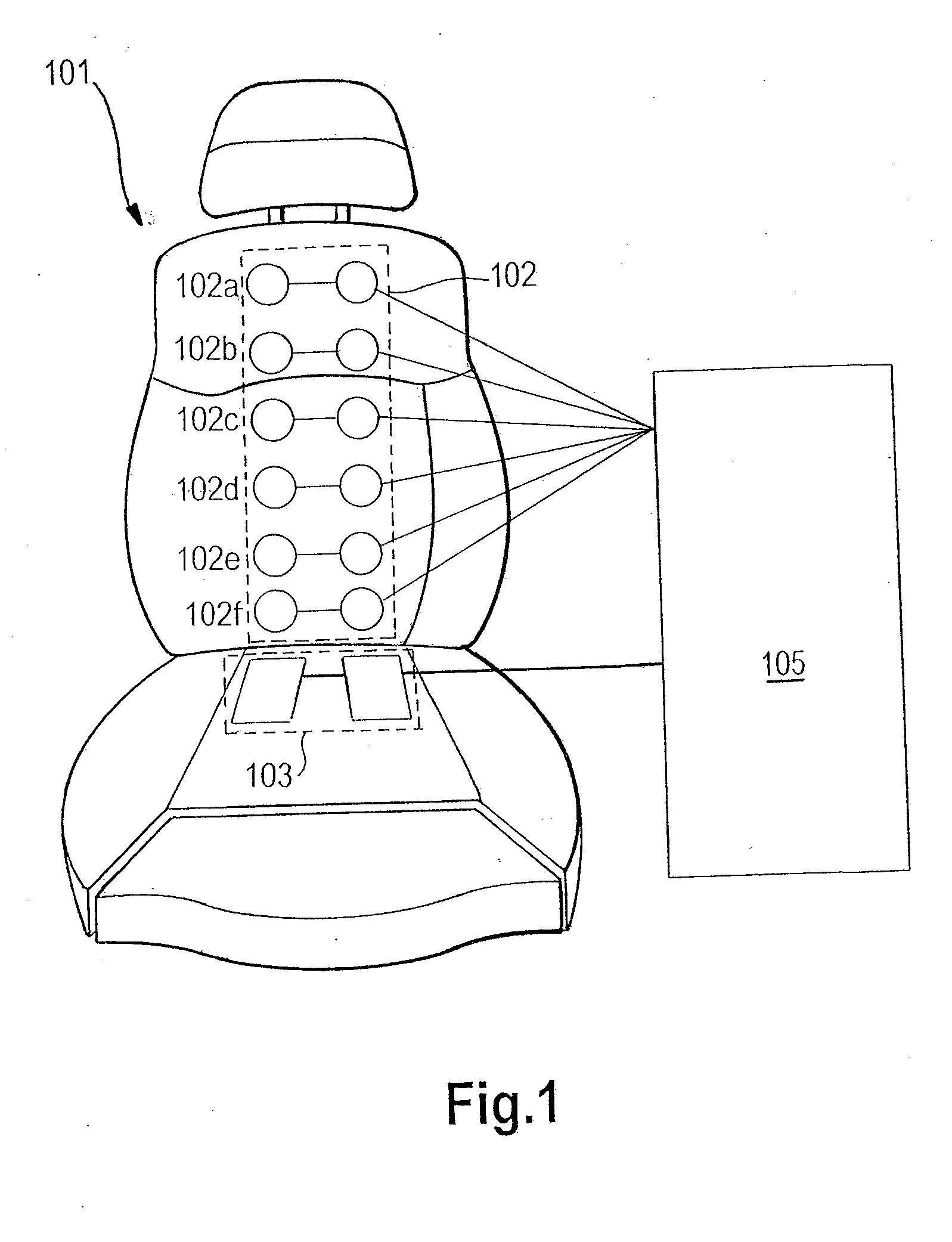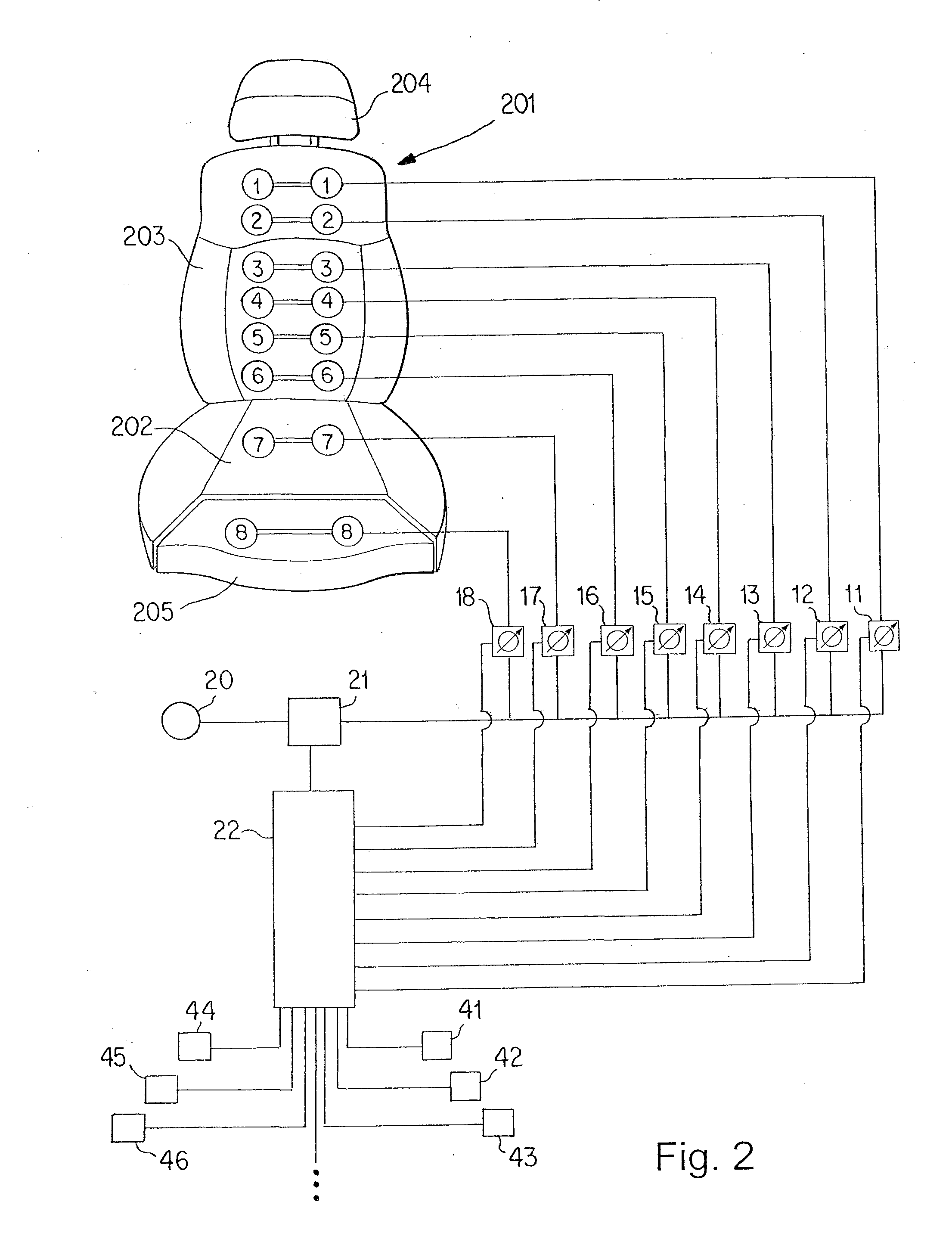Method and Device for Adjusting a Seat
- Summary
- Abstract
- Description
- Claims
- Application Information
AI Technical Summary
Benefits of technology
Problems solved by technology
Method used
Image
Examples
Example
[0082]FIG. 2 shows a a seat according to a first embodiment of the invention. The seat 201 includes a seat cushion 202, a backrest 203, a headrest 204, and a thigh support 205 as part of the seat cushion 202. Six pairs of lifting elements 1 to 6 are disposed above one another in the backrest 203. Two pairs of lifting elements 7 and 8 are provided in the seat cushion 202. The lifting elements 1 to 6 are used for massaging purposes while the lifting elements 7 are used for the mobilization of the spinal column. In this respect, the structure of the seat 201 corresponds to the related art seat shown in FIG. 1. Furthermore, the lifting elements 8 are provided for massaging purposes in the thigh support.
[0083]A pneumatic pump 20 acts by way of a valve 21 on the pairs of lifting elements 1 to 8 with the interposition of pressure sensors 11 to 18. The pressure sensors 11 to 18 each additionally have a throttle function for regulating the pressure in the pairs of lifting elements 1 to 8.
[00...
Example
[0122]In a second embodiment of the invention shown in FIG. 3, the number of sensors is reduced. Two sensors 31 and 32 are provided here which are assigned to the lifting-element pairs 1, 2 and the lifting-element pairs 5, 6 respectively. The contact pressure applied by a user to the seat 201 is thus detected in two spatially separate regions of the backrest 203. By combining the two uppermost lifting-element pairs 1, 2 and the two lowermost lifting-element pairs 5, 6, an average pressure is determined in the upper and lower regions of the backrest 203. Similarly, sensors 33 and 34 are assigned to the lifting-element pairs 7, 8 in the seat cushion 202 respectively, as a result of which the pressure applied by a user to the rear and front regions of the seat cushion 202 can be detected.
[0123]Before a user sits down in the seat, a predetermined fill pressure (“primary pressure”) is applied to the lifting elements 1 to 8. When the user sits down in the seat, his back rests against the ...
PUM
 Login to View More
Login to View More Abstract
Description
Claims
Application Information
 Login to View More
Login to View More - Generate Ideas
- Intellectual Property
- Life Sciences
- Materials
- Tech Scout
- Unparalleled Data Quality
- Higher Quality Content
- 60% Fewer Hallucinations
Browse by: Latest US Patents, China's latest patents, Technical Efficacy Thesaurus, Application Domain, Technology Topic, Popular Technical Reports.
© 2025 PatSnap. All rights reserved.Legal|Privacy policy|Modern Slavery Act Transparency Statement|Sitemap|About US| Contact US: help@patsnap.com



